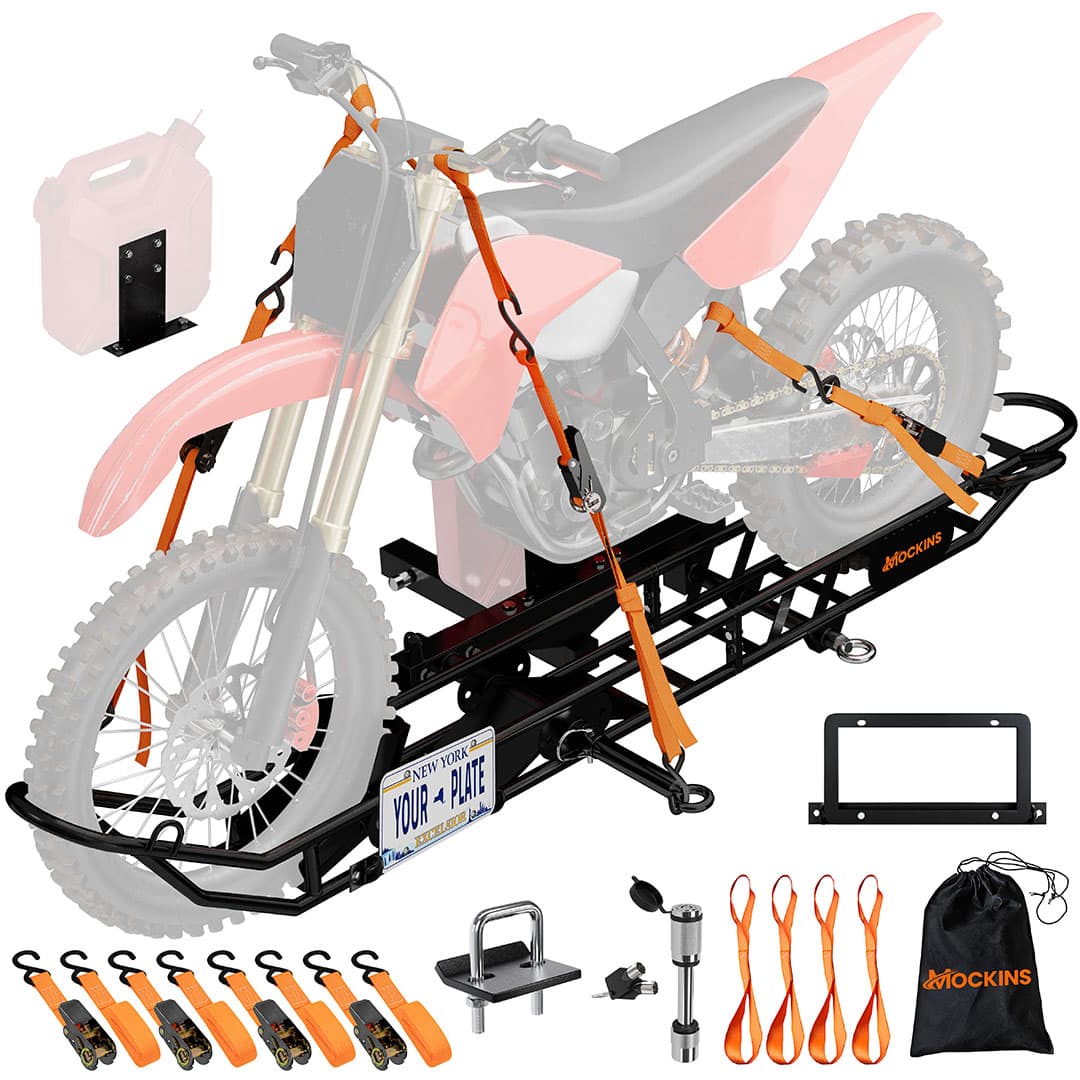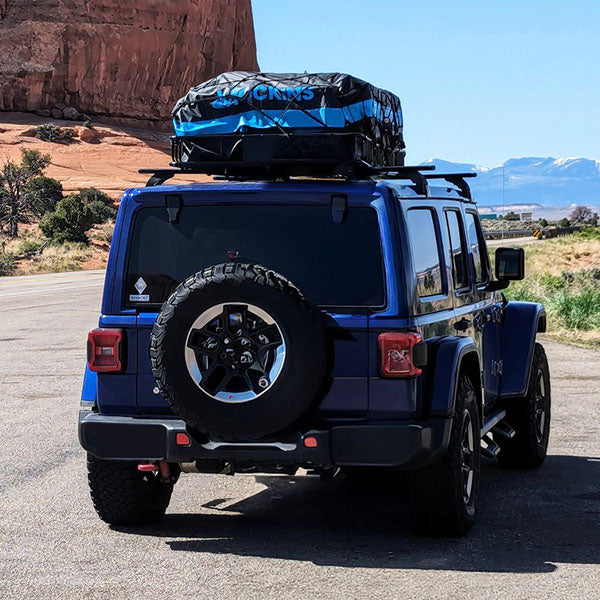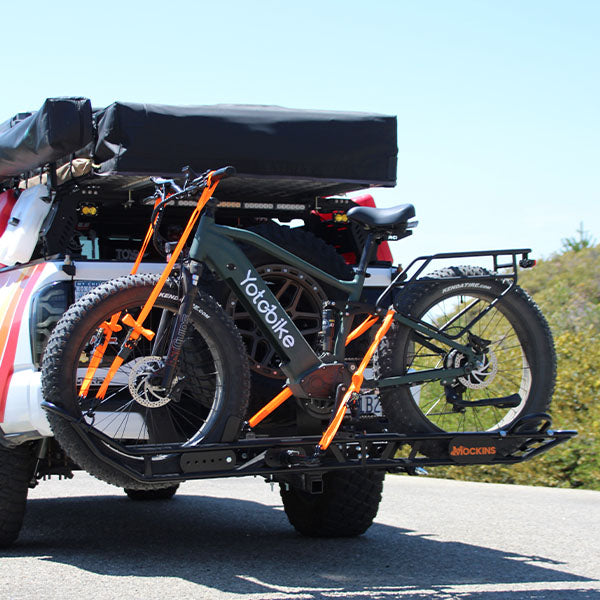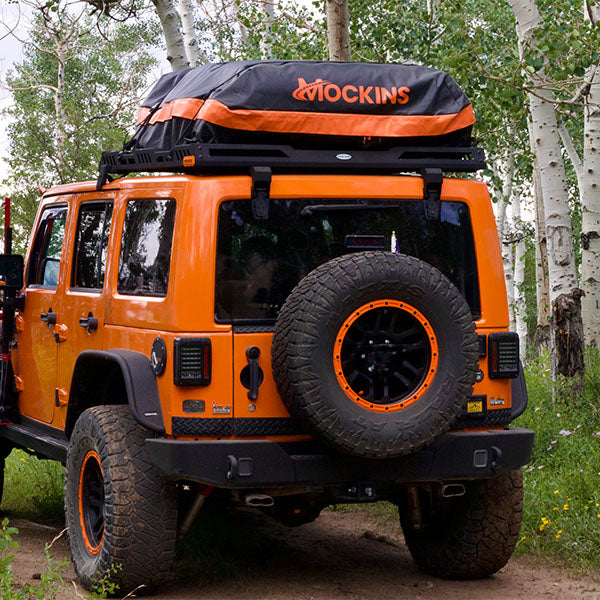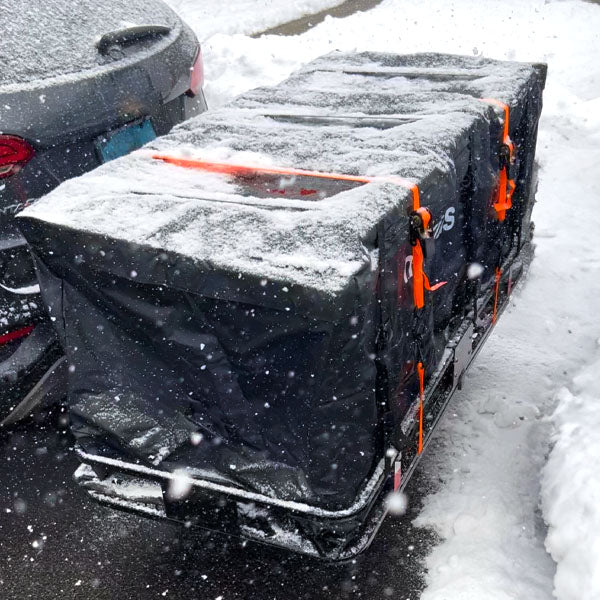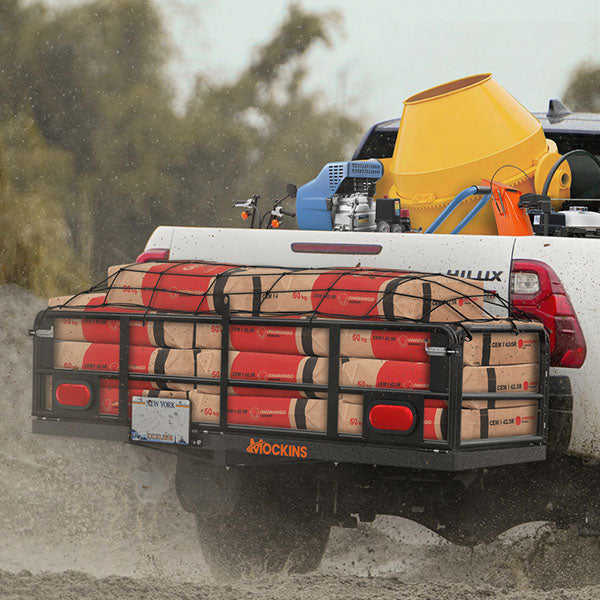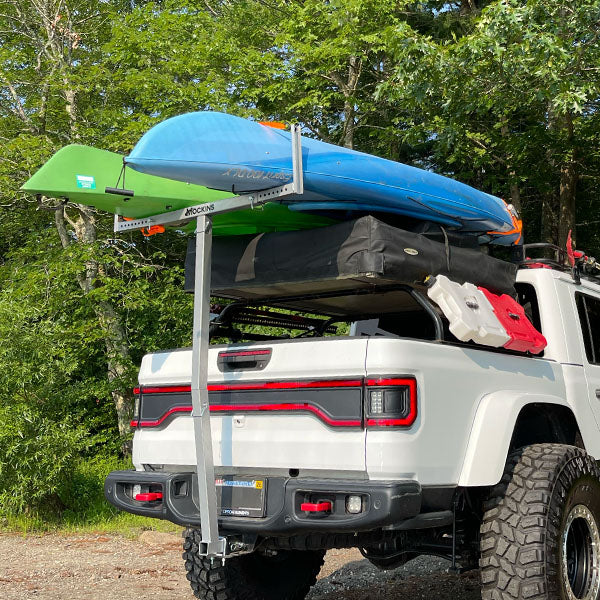When your road trip includes gravel roads, rainstorms, long highway stretches, and maybe an unexpected detour, durability isn’t a nice-to-have: it’s everything. A hitch cargo carrier isn’t merely “extra space," it’s part of your vehicle now. It must stand up to vibration, weather, weight, and time.
At Mockins, we don’t just design cargo carriers for looks or capacity. We design them to survive real roads, real use, and real abuse. Let me tell you why that focus matters, and how two of our top carriers deliver durability you can trust.
Why Durability Should Be Non-Negotiable
Here are a few reasons durability is not just a spec, but an absolute essential:
-
Corrosion Resistance
Steel rusts, hardware seizes, welds crack. If your carrier can’t resist moisture, salt, and grit, it fails where you need it most. -
Structural Integrity Under Load
It’s not enough to carry weight. A dependable hitch cargo carrier must hold that weight under motion, bumps, and shifting loads without bending or flexing excessively. -
Hardware Reliability
Every attachment point is a potential failure. Pins, bolts, nuts, locking mechanisms: these must be rugged and well-engineered. -
Design for Repeated Use
Folding parts, hinges, and shanks all must endure opening/closing cycles without loosening or sagging. -
Protection for Your Gear
If your cargo hitch carrier flexes or rattles badly, your cargo is the next victim: shaken, scratched, or worse.
How Our Carriers Deliver Durability You Can Rely On
Let’s look at two flagship Mockins sets and see how their features support real-world resilience.
1. XXL Trailer Hitch Cargo Carrier & 50 Cu Ft Cargo Bag
This is our heavy-duty hauler. Built for weekend warriors, long-distance haulers, and families with more gear than sense.
Durability Highlights:
-
Robust Steel Frame
The basket is built from thick gauge steel with reinforced crossbars and high-rail sides, designed to resist bending under full load. -
Powder-Coated Finish
The frame is finished with a premium powder coat to resist rust, corrosion, and chipping even on rough roads and in salty air. -
Heavy-Duty Welds
Key joints and corners are reinforced with double welds or gusseted supports to reduce stress concentrations. -
Cargo Bag Design Synergy
The included 50 Cu Ft waterproof bag fits snugly within the basket, reducing wind flap and movement that could stress the frame. Its seams and zipper paths are reinforced, and flaps over rain-prone areas add protection. -
High Load Rating
The carrier is engineered for high payloads with safe margins, ensuring that even at heavy loads it remains within its elastic zone.
Because of these design choices, this XXL carrier doesn’t just look tough — it performs. It flexes less, rattles less, and outlasts the average road trip.
2. Hitch Carrier & 15 Cu Ft Cargo Bag + Packing Cubes
This one is scaled-down, but built with the same mindset, for those who want reliability in a more manageable package.
Durability Highlights:
-
Rustproof Coating
The frame uses a rust-resistant finish on every exposed surface, including edges and mounting tabs, to prevent corrosion in the long run. -
Robust Hardware
Bolts, nuts, and pins are all grade-rated, plated, and sealed where possible. Nothing is left weak. -
Sturdy Bag with Accessories
The 15 Cu Ft bag is built from thick, abrasion-resistant material with welded seams. The packing cubes included help distribute load and prevent shifting inside the bag, imposing less stress on the bag’s structure. -
Frame Geometry for Strength
The frame is designed with triangulated bracing, reducing bending moments. This helps the carrier resist torsion or twist when partially loaded or cornering. -
Practical Load Ceiling
At 500 lbs. rating, it gives a strong safety margin for most users. It’s honestly overbuilt for many use cases, which helps prevent overstress failures.
Tough Lessons We Learned the Hard Way
When we design and test, we push things until they break, for your peace of mind. Here are some of the lessons that shaped our design philosophy:
-
Don’t Underestimate Rust
In early prototypes, exposed edges rusted first and propagated inward. That taught us to fully coat and seal every surface, even the ones you can’t see. -
Beware of Overhang & Leverage
A long overhanging load acts like a lever, stressing the frame more than pure weight alone. Our designs limit overhang or reinforce accordingly. -
Hinges and Folds Must Be Hardened
Repeated folding and unfolding can wear down parts. That’s why hinges and joints use stronger materials and tighter tolerances. -
Cargo Movement Is the Enemy
A shifting load magnifies stress. That’s why we prioritize good securing systems (net, straps, tie-down points) so the carrier doesn’t become a flexing disaster mid-drive. -
Test in Real Conditions
Gravel roads, potholes, salt spray, steep driveways — we don’t just test in ideal conditions. We take gear out on real trips, let them beat it up, then learn. The carriers you see for sale are improved through those failures.
Tips to Get Longevity From Your Hitch Carrier
- Clean and rinse after muddy or salty road trips.
- Touch up chips in the coating immediately to prevent rust.
- Check all bolts and hardware periodically; vibrations can loosen them.
- Avoid extreme overloading. Stay under the rating margin.
- Use internal support (packing, load distribution) to avoid point loads on frame.
Final Thoughts: Durability Isn’t a Feature — It’s the Foundation
You can fill any carrier with straps, nets, or flashy extras, but if the base structure isn’t built to last, it all falls apart somewhere down the road.
We designed our XXL Hitch Carrier and Carrier with Hitch Bag and Packing Cubes from the ground up with real durability in mind. Because when customers invest in gear, they deserve equipment that won’t quit on them halfway through the trip.
Your journey matters. Your cargo matters. And your carrier should carry you through every mile, season after season. With Mockins, that’s exactly what you get.
